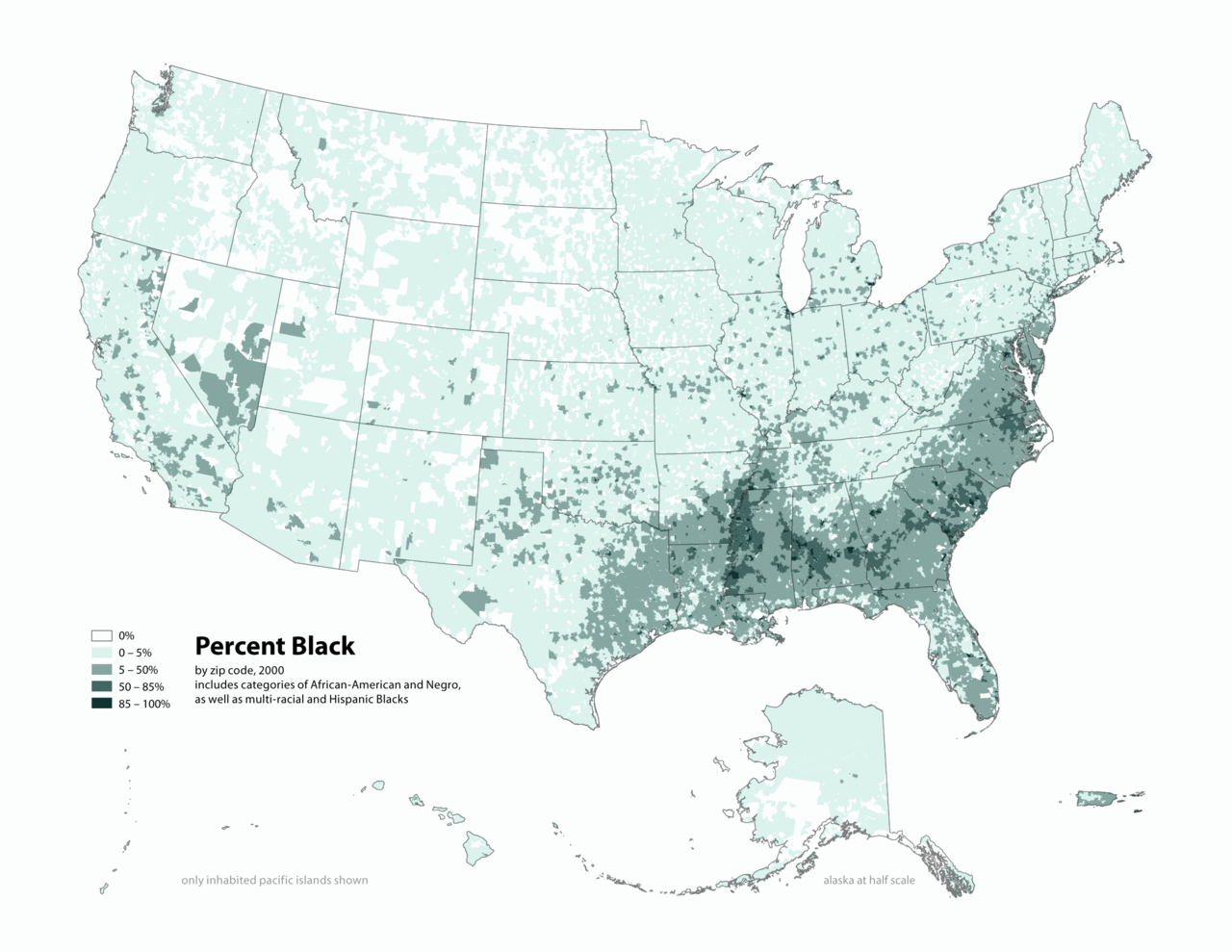From
colonial times to the early-twentieth century, much of the
Lower South had a Black majority.
Three Southern states had populations that were majority Black: Louisiana (until about 1890[18]), South Carolina (until the 1920s[19]) and Mississippi (from the 1830s to the 1930s[20]). In the same period, Georgia,[21] Alabama,[22] and Florida,[23] had populations that were nearly 50% Black, while Maryland,[24]North Carolina,[25] and Virginia[26] had Black populations approaching or exceeding 40%. Texas' Black population reached 30%.
[27]
The demographics of these states changed markedly from the 1890s through the 1950s, as two waves of the
Great Migration led more than 6,500,000 African-Americans to abandon the economically depressed, segregated Deep South in search of better employment opportunities and living conditions, first in Northern and Midwestern industrial cities, and later west to California. One-fifth of Florida's Black population had left the state by 1940, for instance.
[28] During the last thirty years of the twentieth century into the twenty-first century, scholars have documented a reverse
New Great Migration of Blacks back to southern states, but typically to destinations in the
New South, which have the best jobs and developing economies.
[29]
The District of Columbia, one of the magnets for Great Migration Blacks, was long the sole majority–minority federal jurisdiction in the continental U.S. The Black proportion has declined since the 1990s due to gentrification and expanding opportunities, with many Blacks moving to suburban Maryland and others migrating to jobs in states of the New South in a reverse of the Great Migration.[29] In 2016, the Black population represented only 48.3% of the population—a considerable decline from 75% in the late-1970s. At the same time, Asian and Hispanic populations have increased in the District, keeping it a majority–minority area.




